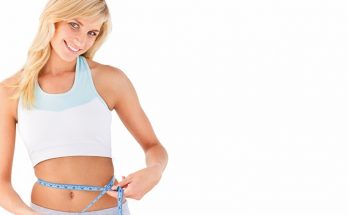There are so many symptoms of anxiety such as sleep disorders or depression, and there are now many alternative healing techniques like yoga, acupuncture, and tai chi can help. The bottom line is that you can develop a better self-regulation, your own self-understanding. You know your body better, you can control it. What’s more, it is likely that anxiety isn’t the primary cause of depression or anxiety. In fact, anxiety and depression are more closely related than most people realize.
A study by the University of Virginia’s Center for Human Performance Research revealed that anxiety correlates most directly with performance in tests like the Stanford–Binet Intelligence Scale–Third Edition (SBI-3D), that is, the ability to perform at a high level in tasks like math and reading.
Similarly, a study in the Journal of Anxiety Disorders revealed that people who feel anxious over certain events have a lower self-reported sense of control, which was also observed in those who felt anxious over things that aren’t actually happening.
If you find yourself overwhelmed with the many symptoms of anxiety and the associated emotional turmoil, don’t give up. The following is not meant to be a comprehensive guide to all the common anxieties I’ve encountered or to treat you. This simply summarizes my experience and experiences with anxious personalities, as I’ve had countless encounters with this disorder. It should be noted that anxiety, though the most common chronic mental disease across the population, can be quite an unusual one and can be debilitating to some individuals.
I’ve been through years of therapy, been prescribed medication, and I’ve even gone under the knife for a couple of minor procedures. The most significant help for anxiety that I’ve found is a regular practice of traditional hatha yoga techniques. Although I am very lucky in my situation, I can’t help but be incredibly fortunate to be healthy and able to work. If you’re a person with an anxiety disorder, don’t let my personal experience or my words be used as a blanket “get well soon” suggestion.
There are many traditional hatha yoga techniques that help to calm and focus the mind. My favorite hatha yoga practices are āsana (yoga poses), pranayama (breathing) and bhajan (chanting). With these two, I practice the simple chanting of mantras. If all I do is chant mantras, I won’t be able to relax my mind and relax my body. In my experience, chanting mantras has a calming effect and is one of the best ways I have found to relax. Mantras are also a great tool to calm your mind when you’re meditating and to help you stay in the present. I find that chanting the mantras of mantras are powerful and helpful when I’m meditating.

When I first studied hatha yoga, it was with a teacher named Satchidanand in the 1970s. I’ve never met him personally, but I’ve heard a lot about him through other students. Satchidanand was the founder. He had a lot of influence over the way yoga was practiced in the early 70’s. He was a bit of a hippy because he was into the idea that we don’t have to believe in a certain yoga system to become enlightened.
This sequence of common yoga poses for beginners is targeted to fight anxiety, to calm down and release tension, to release energy and release stress. You can do this pose sequence for as many minutes per day as you like. You can use the sequence every day and do it consistently. It is a very effective yet simple yoga routine.
This is the yoga sequence that I use for daily stress relief during the week, and during a long week, and as a quick relaxation during the short evening.
This sequence can be used for all the relaxation and stress relief activities that you may want to engage in.
It is based on my experience in yoga class, as well as my own research on calming yoga poses for anxiety. This is the sequence that I use for my yoga lessons, and I have found it very effective and yoga helps to promote mental clarity. It is a very fast and straightforward, not to challenging, one-minute, yoga sequence.
I have found it very useful for me when I am teaching or practicing, yoga at night by myself. I have found it easy to maintain an efficient daily routine that uses only these 20 minutes of yoga.

Use these hatha yoga poses for anxiety to calm down, find inner peace, and tranquility.
- Big Toe Pose (Padangusthasana)
- Legs Up the Wall (Viparita Karani)
- Bound Angle Pose (Baddha Konasana)
- Bow Pose (Dhanurasana)
- Child’s Pose (Balasana)
- Bridge Pose (Setu Bandha Sarvangasana)
- Camel Pose (Ultrasana)
- Forward Fold (Uttanasana)
- Cow Pose (Bitilasana)
Easing of discomfort is one of the most essential aspects of meditation. This process is called pranayama (hatha yoga breathing). This breathing is important because it helps you relax and find your center of the Earth.
For many people, pranayama is often tricky. If there is sudden pain in your head, it may feel like your throat is closed. This may be the case, but for many people with anxiety, it is uncomfortable and uncomfortable in this way. Some people find that their heart rate jumps up to 140 and breath comes out more shallow.
If the pain continues even after you start breathing in, ask yourself, “Is the pain really the problem?” If the anxiety is the problem, you want to breathe a lot, but you are not able to.
I hope these hatha yoga practices will give you peace and tranquility. I pray that they will empower you to create a life free from anxiety. It is our goal as yogis (read definition of what is a yogi) to serve and be of service to others.



